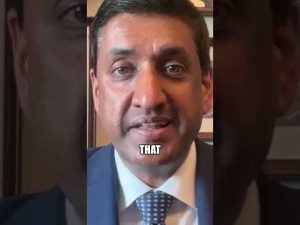In recent days, the spotlight has turned sharply to immigration policies across the United States, with significant developments in New Jersey and Indiana stirring up quite a bit of controversy. As the new administration settles in, one might say it’s like watching the first few minutes of a gripping horror movie—everyone is on the edge of their seat, unsure of what will happen next. In New Jersey, there’s a palpable tension as local officials express their concerns about the actions of Immigration and Customs Enforcement (ICE). Some residents feel a sense of unease, particularly after reports emerged that Americans, including a military veteran, were detained before being released once they proved they were not among those targeted. This brings us to the crux of the matter: how should immigration enforcement be conducted to ensure that no innocent people get caught in the crossfire?
Judge Andrew Napolitano, a senior judicial analyst, raised some valid points about the efficiency of ICE’s approach. Many individuals apprehended by ICE already have existing warrants for crimes—not simply for being unlawfully present in the country. This makes the whole process a bit sticky. It seems logical that ICE would operate using warrants to avoid mistakenly apprehending the wrong people. The concern here is twofold: ICE needs to act responsibly, and local law enforcement must also be prepared to balance federal law with their community’s support. It’s a complicated dance that could leave everyone stepping on toes if not handled carefully.
Meanwhile, in Indiana, a different drama is unfolding. The state’s attorney general has filed a lawsuit aimed at the sheriff of Saint Joseph County for failing to comply with federal immigration enforcement. This battle highlights the contentious relationship between state and federal law and raises questions about law enforcement’s duties in immigration matters. Indiana has its own laws mandating cooperation with federal requests, so this legal action might be seen as the state’s way of taking a stand against perceived non-compliance by local officials. The attorney general’s actions here reflect a more aggressive stance on the state’s part concerning illegal immigration—a clear signal that the state desires to cooperate fully, irrespective of local opinions.
As Indiana gears up for this legal confrontation, the numbers surrounding ICE’s recent work can’t be ignored. New reports suggest that thousands have already been detained in just the first week of the new administration—a head-spinning figure that signals a serious push towards stricter immigration enforcement. While some individuals were just recently deported, others await their fates as they navigate the often murky waters of the immigration system.
Adding to the complexity, there’s also chatter about birthright citizenship. A recent federal court ruling has caused a stir, preventing the enforcement of executive orders related to this matter. This decision underscores the judicial system’s role in these contentious debates, and it begs the question: How will this affect future policies and those who call America their home?
In conclusion, the saga around immigration enforcement continues to unfold across the country, and opinions are as varied as the individuals involved. As communities grapple with the implications of federal actions, the interplay between state and federal authority remains at the forefront. While some locals seek to protect their communities from what they perceive as heavy-handed enforcement, others believe the laws must be upheld with rigorous attention to detail. It’s clear that the road ahead is filled with legal battles, emotional debates, and perhaps a few more surprising twists—making it a compelling issue to keep an eye on as it affects real lives in real-time.







